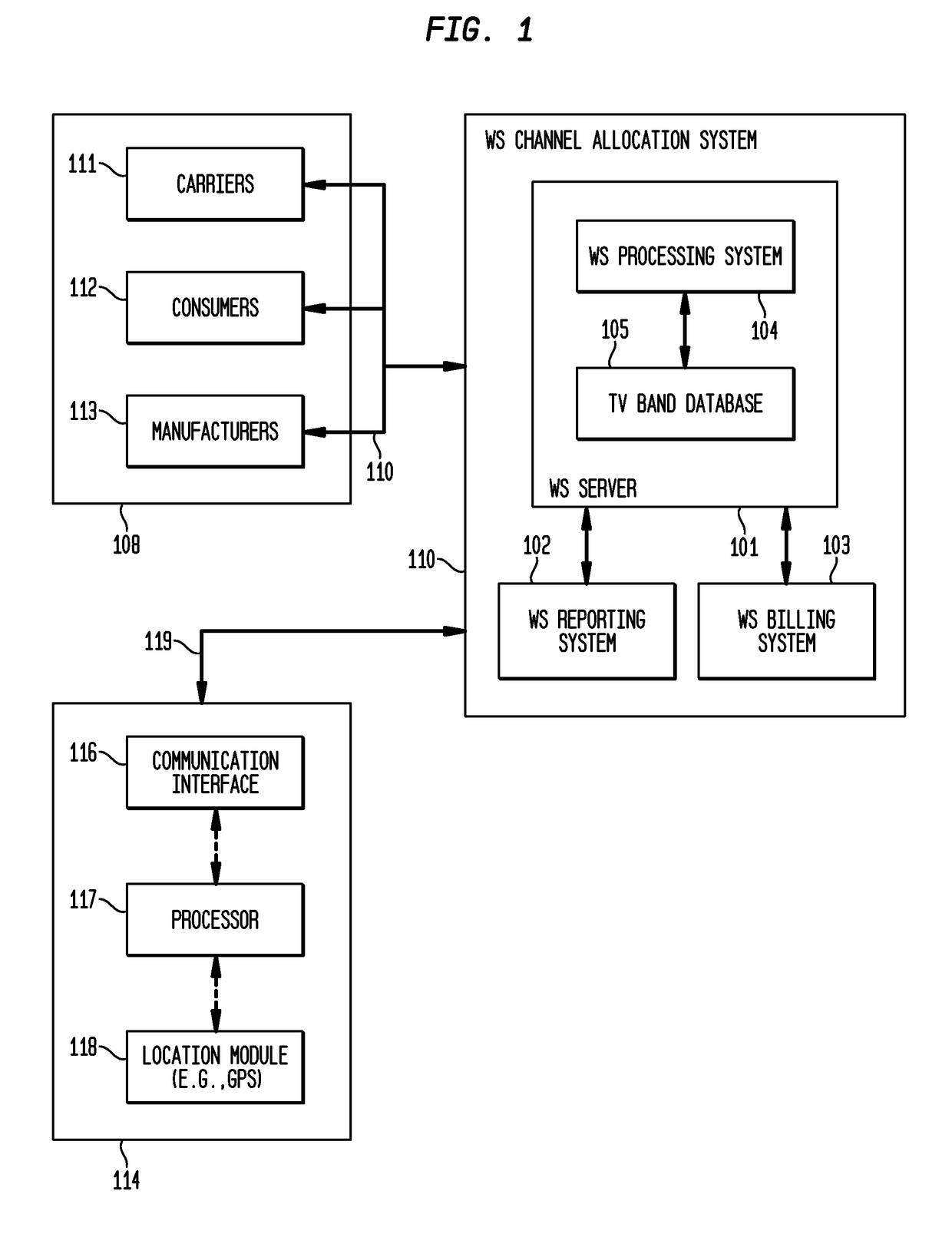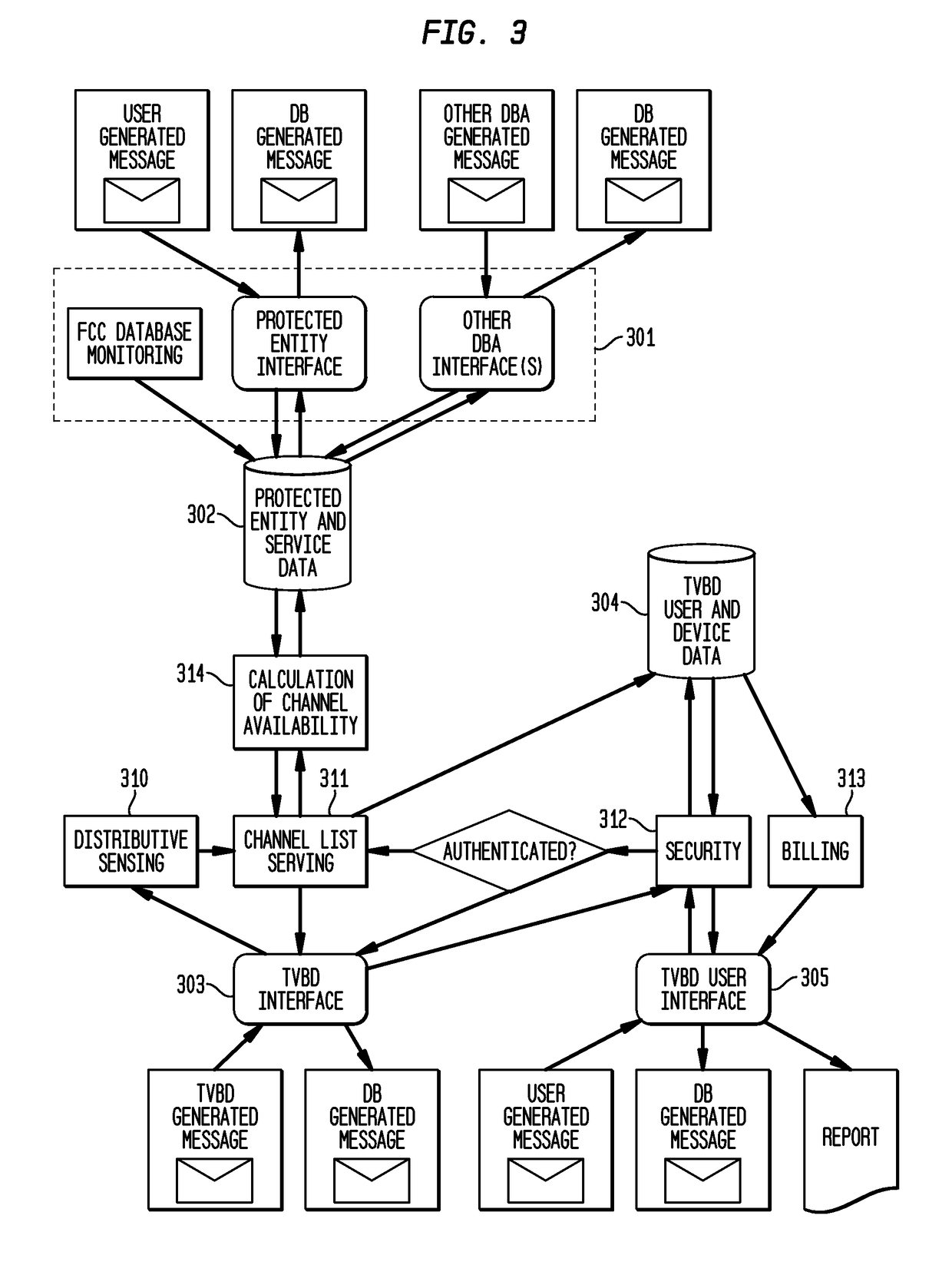Channel allocation system for protected service areas
a channel allocation and protected service area technology, applied in the field of communication, can solve the problems of large computation of permitted bands to allocate to tvbd devices, unused portions of frequency bands exist,
- Summary
- Abstract
- Description
- Claims
- Application Information
AI Technical Summary
Benefits of technology
Problems solved by technology
Method used
Image
Examples
Embodiment Construction
[0050]In accordance with embodiments of the present invention, a channel allocation system employs a server to record communication characteristics of incumbent service providers registered or otherwise licensed to operate within certain frequency spectra. The channel allocation system is configured to allow registration of licensed service providers, or access existing licensed service provider databases, to obtain geographic location and channel frequency information. The channel allocation system employs a method of pre-computation of available channel frequency space through classification of areas within a given geographic area that the incumbent service providers operate in. Such classification forms a grid of areas with successive resolution, termed herein as “tiles”, over the geographic area and superimposes protected service contours over the geographic area. Protected service contours are formed based on the communication characteristics of incumbent service providers that...
PUM
 Login to View More
Login to View More Abstract
Description
Claims
Application Information
 Login to View More
Login to View More - R&D
- Intellectual Property
- Life Sciences
- Materials
- Tech Scout
- Unparalleled Data Quality
- Higher Quality Content
- 60% Fewer Hallucinations
Browse by: Latest US Patents, China's latest patents, Technical Efficacy Thesaurus, Application Domain, Technology Topic, Popular Technical Reports.
© 2025 PatSnap. All rights reserved.Legal|Privacy policy|Modern Slavery Act Transparency Statement|Sitemap|About US| Contact US: help@patsnap.com



